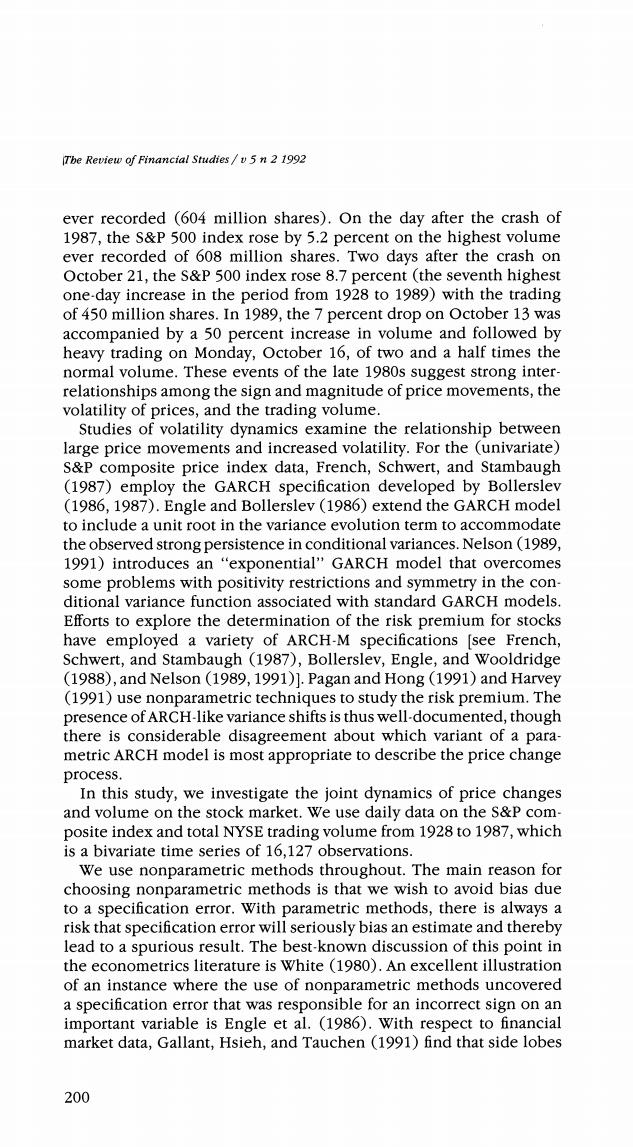正在加载图片...

The Review of Financial Studies /v 5 n 2 1992 ever recorded (604 million shares).On the day after the crash of 1987,the S&P 500 index rose by 5.2 percent on the highest volume ever recorded of 608 million shares.Two days after the crash on October 21,the S&P 500 index rose 8.7 percent (the seventh highest one-day increase in the period from 1928 to 1989)with the trading of 450 million shares.In 1989,the 7 percent drop on October 13 was accompanied by a 50 percent increase in volume and followed by heavy trading on Monday,October 16,of two and a half times the normal volume.These events of the late 1980s suggest strong inter- relationships among the sign and magnitude of price movements,the volatility of prices,and the trading volume. Studies of volatility dynamics examine the relationship between large price movements and increased volatility.For the (univariate) S&P composite price index data,French,Schwert,and Stambaugh (1987)employ the GARCH specification developed by Bollerslev (1986,1987).Engle and Bollerslev (1986)extend the GARCH model to include a unit root in the variance evolution term to accommodate the observed strong persistence in conditional variances.Nelson (1989, 1991)introduces an "exponential"GARCH model that overcomes some problems with positivity restrictions and symmetry in the con- ditional variance function associated with standard GARCH models. Efforts to explore the determination of the risk premium for stocks have employed a variety of ARCH-M specifications [see French, Schwert,and Stambaugh (1987),Bollerslev,Engle,and Wooldridge (1988),and Nelson(1989,1991)].Pagan and Hong (1991)and Harvey (1991)use nonparametric techniques to study the risk premium.The presence of ARCH-like variance shifts is thus well-documented,though there is considerable disagreement about which variant of a para- metric ARCH model is most appropriate to describe the price change process. In this study,we investigate the joint dynamics of price changes and volume on the stock market.We use daily data on the S&P com- posite index and total NYSE trading volume from 1928 to 1987,which is a bivariate time series of 16,127 observations. We use nonparametric methods throughout.The main reason for choosing nonparametric methods is that we wish to avoid bias due to a specification error.With parametric methods,there is always a risk that specification error will seriously bias an estimate and thereby lead to a spurious result.The best-known discussion of this point in the econometrics literature is White (1980).An excellent illustration of an instance where the use of nonparametric methods uncovered a specification error that was responsible for an incorrect sign on an important variable is Engle et al.(1986).With respect to financial market data,Gallant,Hsieh,and Tauchen (1991)find that side lobes 200